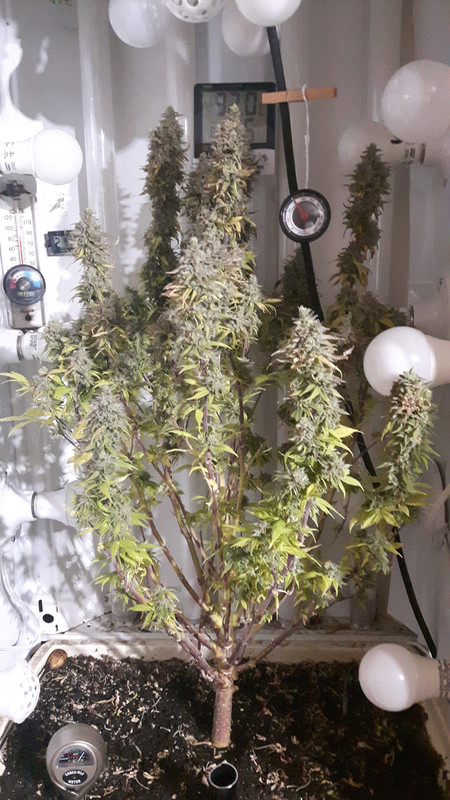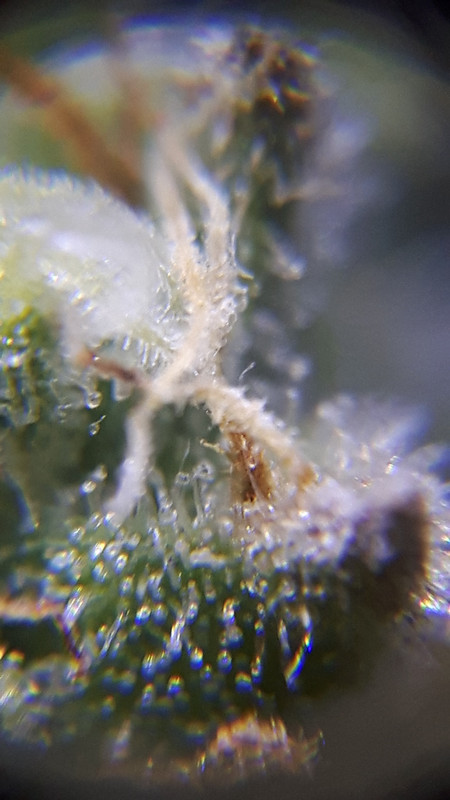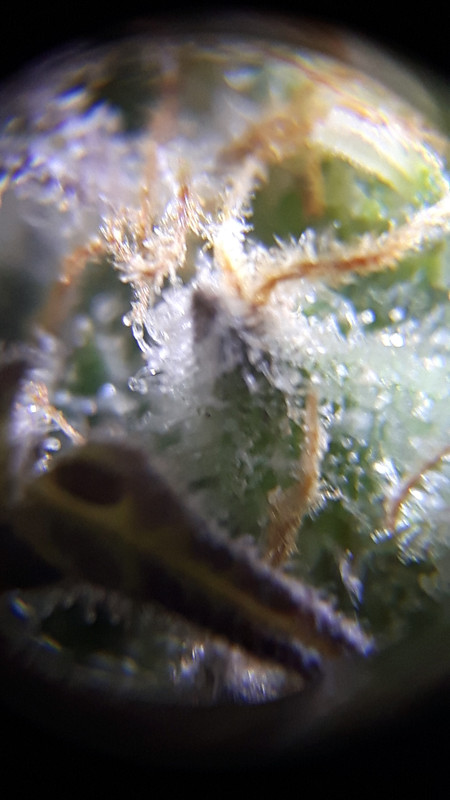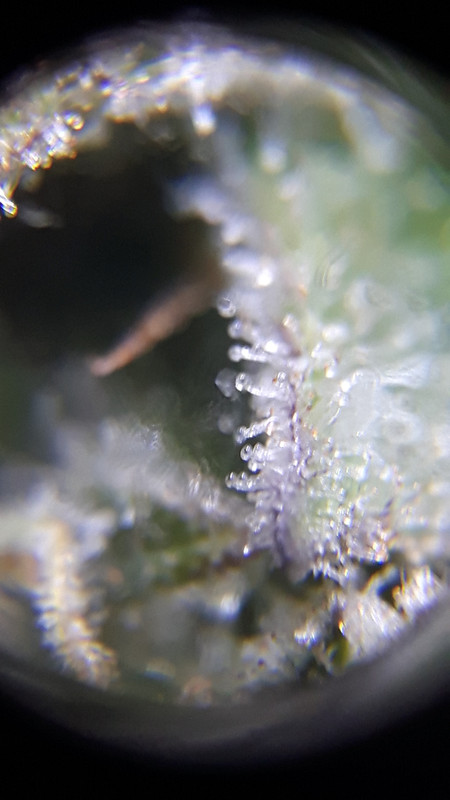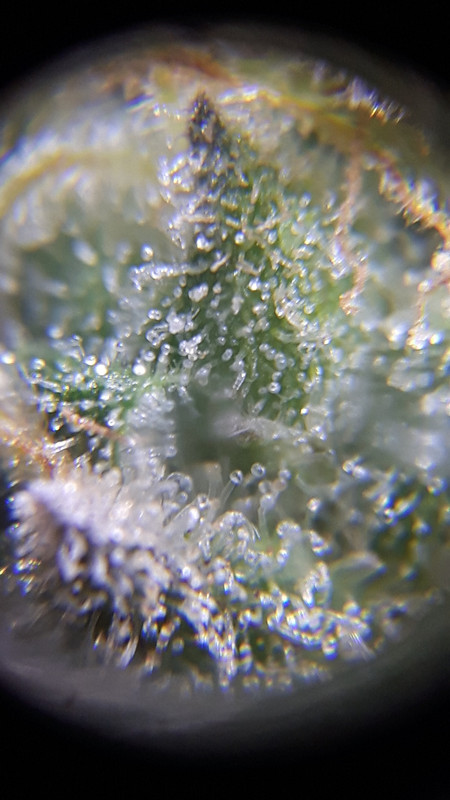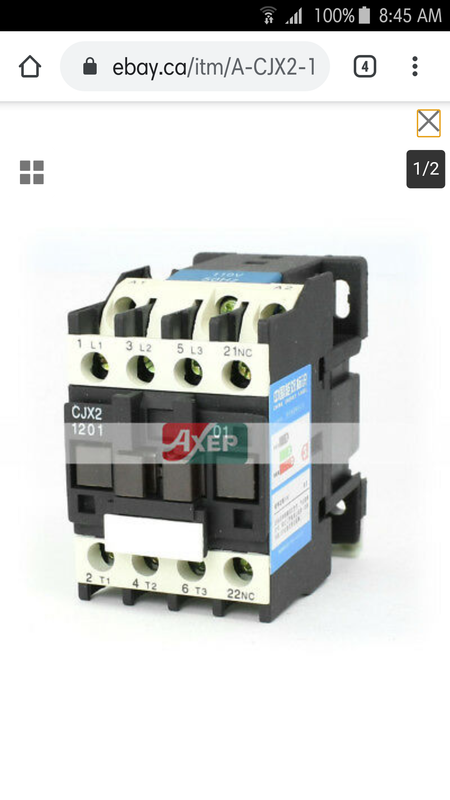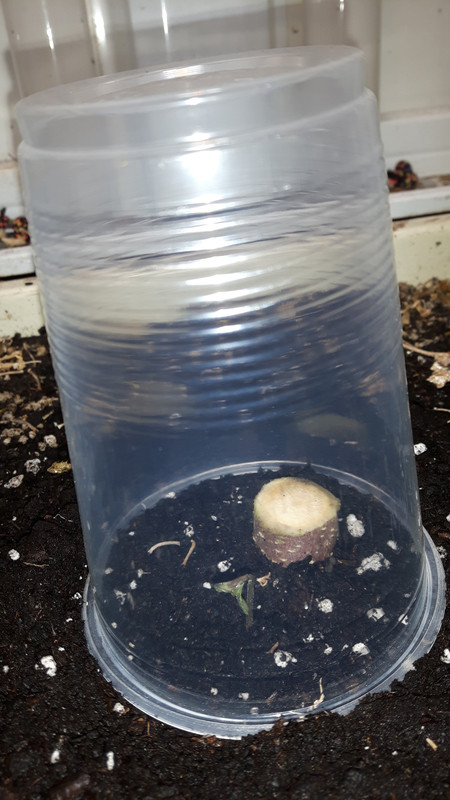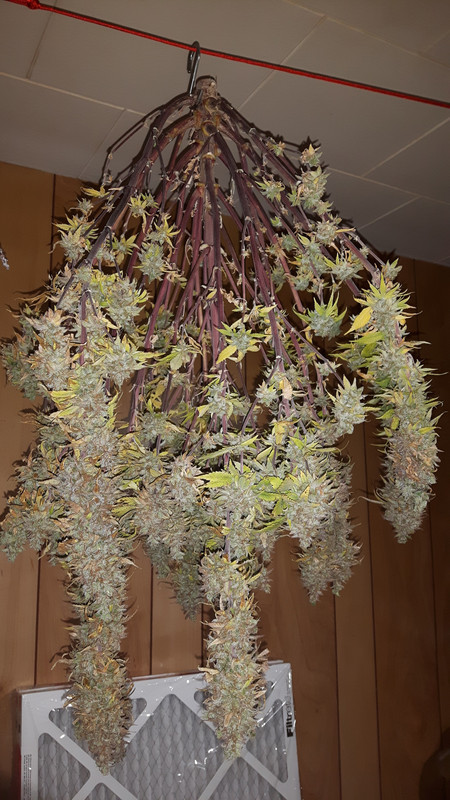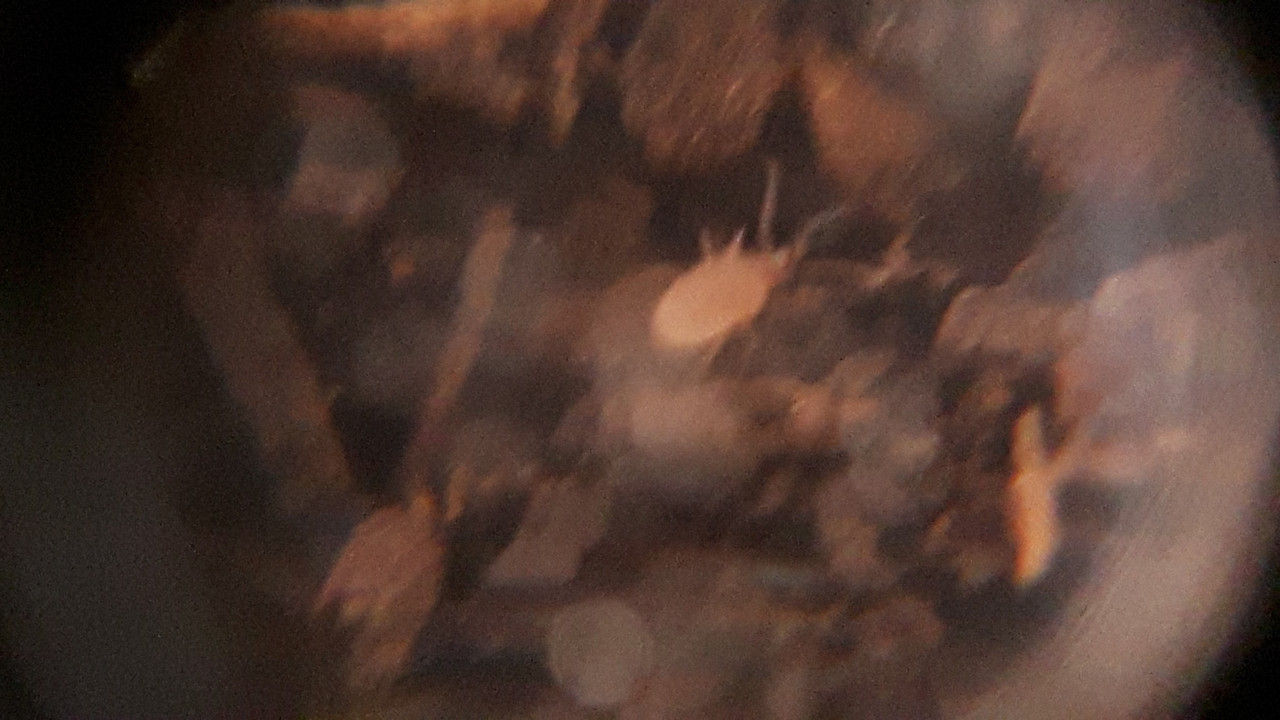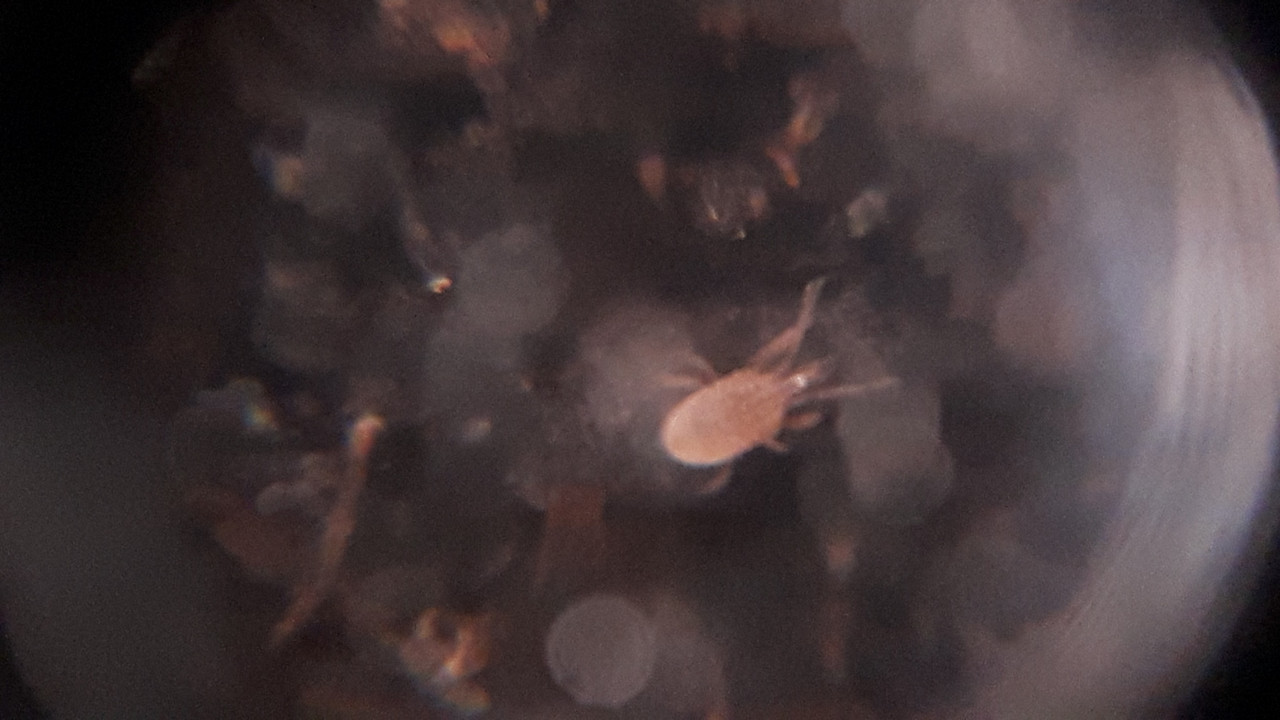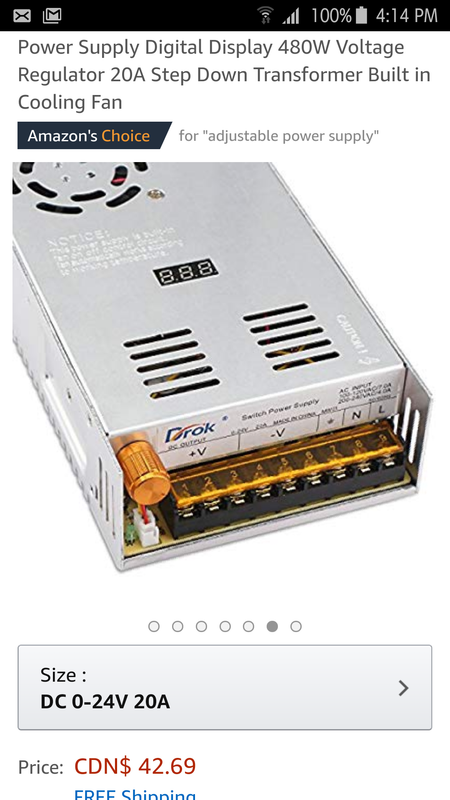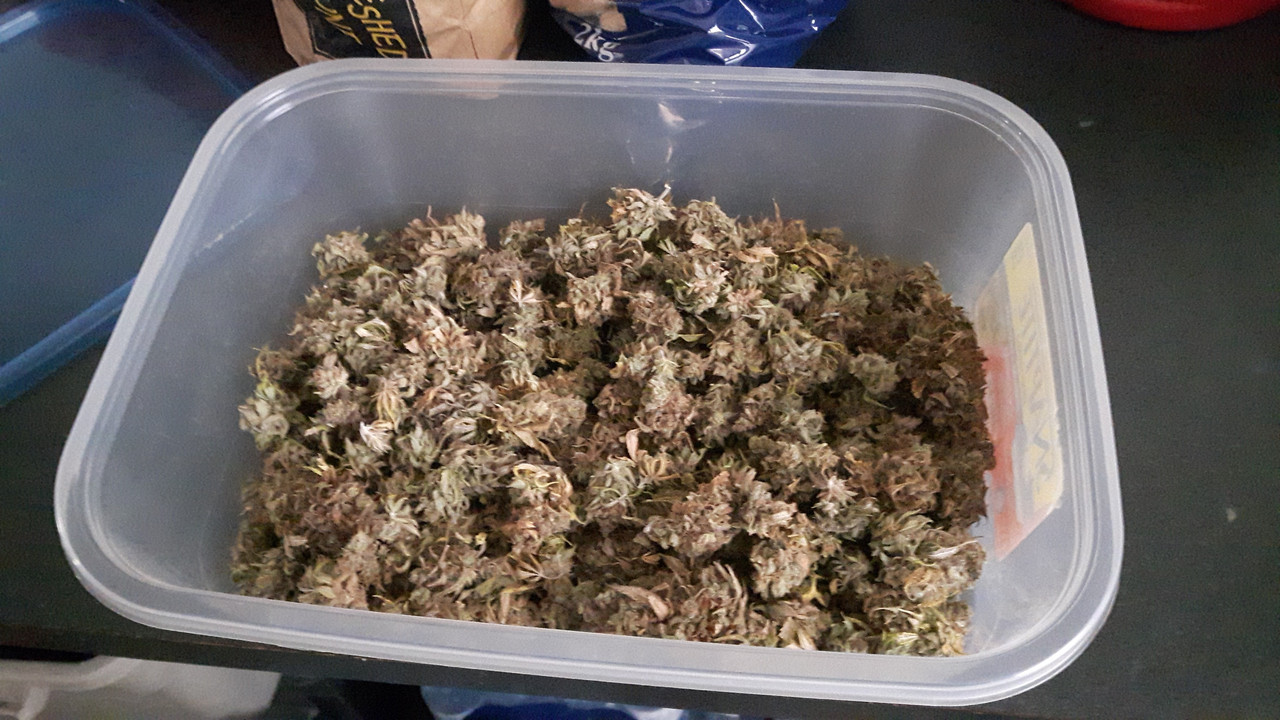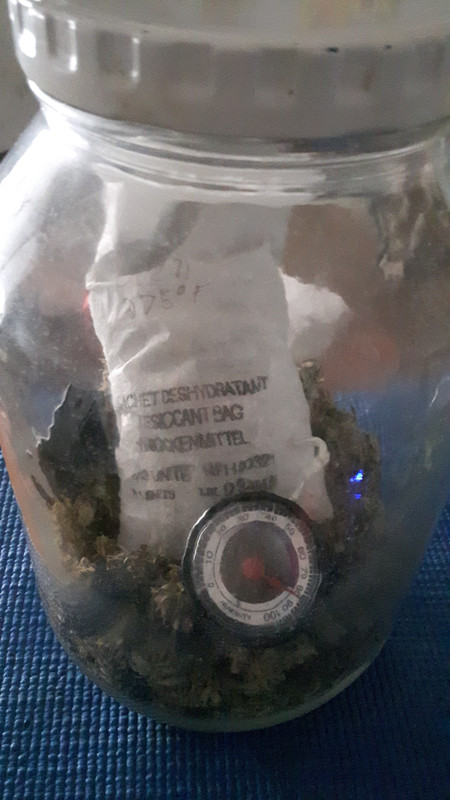-
ICMag with help from Phlizon, Landrace Warden and The Vault is running a NEW contest for Christmas! You can check it here. Prizes are: full spectrum led light, seeds & forum premium access. Come join in!
You are using an out of date browser. It may not display this or other websites correctly.
You should upgrade or use an alternative browser.
You should upgrade or use an alternative browser.
Diary PCBuds mini-grow
- Thread starter PCBuds
- Start date
Danhashish
Active member
renewable energies are unpopular
PCBuds
Well-known member
I sent a PM to f-e and Hookahhead but then figured I might as well post it in my thread.
PCBuds said:I reread the PM from SuperBadGrower and he stated that everyone using the Gen2 Bridgelux strips is running them at the test current.
I had assumed that the test current was chosen to make their numbers look better and that nobody would actually use it at the test current.
The LED Gardener said he used 75% of Max for current.
These are some of the specs. for the strips that I bought.

So I decided to aim for 350 milliamps and check the voltage and temperatures at that setting.

Everything was fine. Things barely got warm at all.
The strip was laying on the wooden tabletop which I guess isn't a very good conductor of heat.
This strip was slowly drawing more and more current as it warmed up so I waited for half an hour before doing temperature and voltage readings. I kept adjusting the voltage to keep the current at 350 milliamps.
I ended up with 19.76 volts at the power supply output and 19.16 volts at the voltage test points on the strip.
So I had a bit of a voltage drop across the five feet of 22 gauge "LED" wire and the ammeter itself.
My IR thermometer was reading 39°C to 40°C at the temperature test point and at the surface of the LED itself.
On the backside of the strip, I was reading 28°C on the edge of this trip and 34°C directly underneath the LED itself.
The strip was really quite bright and it was hard to get a reading on the thermometer with the lights beaming in my face.
I was seeing spots. LOL
I'm pretty sure I'm going to use the 22 gauge "LED" strip wire rated at 920 milliamps.
I'm only drawing 350 milliamps and only 40° C max. so I should be fine.
24 strips at 350 milliamps and 19.76 V is less than 175 Watts. My power supply is rated 20 amps and 500 watts so I'm nowhere near maxing it out.
I did notice a huge spark when I plugged in the power supply though, so there's a big surge current
I think I want to leave the power supply always on and have the output voltage switched on and off with the timing of the lights. I've just got to figure out how to do that. I could run two timers.
I think I'm going to run my five 10-watt SILs at the ceiling for the whole grow just in case one system fails I still have half my lights.
I may not include my four 2-foot strips in the first grow. I kind of don't know where to put them and how to mount them.
PCBuds
Well-known member
I also thought I'd post SuperBadGrowers' PM as well.
It got a lot of great info but an opinion as well so I will remove it if requested.
It got a lot of great info but an opinion as well so I will remove it if requested.
SuperBadGrower said:PCBuds said:I'm thinking of buying an LED driver but I don't know what to buy.
Does each LED strip need its own matching driver?
Do the strips have all their LED segments in series or parallel?
I figure if the segments are all in parallel, then all I would need to be concerned about is the Watts and then make sure the driver is rated for those Watts.
I've already got a bunch of 12 Volt power supplies that I may be able to use if I can control the current.
Hey mate,
Well this rabbit hole goes quite deep like I always say. I'll put some links or else I will be writing a few pages of words hehe.
Firstly, most strip builds use 1 good driver per fixture. These high efficiency strips are unlike consumer products you see in stores - they are often not 12 or 24v. For example Bridgelux use 19.5V and 39V, there are 22V strips, 34V.
The power supplies you have on hand are probably not gonna be adequate even if the voltage was right. High efficiency drivers (>90% AC→DC) such as Meanwell HLG series or Inventronics are pretty esoteric items. architecture in consumer goods are 55-80% typically.
Doesn't matter whether the leds are in parallel or series - on strips and COBs and bulbs they are almost always connected in a combination of series and parallel.
What matters though is how you connect strips to a driver. Parallel splits the current and series adds the voltages. Both are possible, it just means you have to match the right driver for it
Basically what you want to do is choose a strip, then match a driver for it. The best bang for buck are Bridgelux strips so you'll be using 19.5V (1ft, 2ft) or 39V (4ft)
But before anything you should watch these. Then you can decide if DIY is for you:
https://www.youtube.com/watch?v=MdLeA2BFT0A&list=PL4ZeBGl9K1KS0VOElerZym9GeFiVK9AnC
https://www.youtube.com/watch?v=UlM5uvO7sao&list=PLFeGgzTAA8vkzWTM7SWiQPlYAhNe3GMGi
these video series and other boards+google taught me everything I needed to know. Rollitup and ledgardener forums are good. Here on ICmag there is low understanding of LED in general; my advice is to avoid this forum for lighting information (too much misinformation and dumb posts).
The second series I linked is about COBs, but strips are the same as cobs only the diodes are bigger and not mashed together. With strips you can use passive heatsink such as aluminum L profile, or heatsinkless when each strip gets <8w/ft (COB builds use PC fans)
I'll add that almost everyone is building lights in parallel these days, so if you want for example a 320w light with 1ft bridgelux strips you might use a Meanwell HLG-320H-20A which gives like 18-22V 15A. you would spread that over 44 strips in parallel to have them run at ~340mA each. 350mA is recommended by the manufacturer for 1ft but many people run them at higher or lower currents. Anyway, that's just an example. Of course almost nobody would buy 44 1ft strips when they could get 22 x 2ft.
it took me some serious study to understand it all, hehe. But I can assure you that it was written before, or I could never have succeeded in making my own lights.
I think if you google things like "bridgelux strip build diy" you'll find a lot of good info. Especially now in 2019.
Or you can name a wattage and a color temperature and a guy like me can list the parts. But I don't recommend it because then you are still a naive consumer following what someone else did instead of understanding it properly.It's worth learning if you plan to keep growing for more years
Other strips are good but currently there isn't a strip with a better cost to value ratio than Bridgelux EB. However the market changes fast, EB gen 3 just came out, competitors will be coming out with good strips again in early 2020.
So even though they are "cheap" theyre still a bit more expensive than other crap. But that is all just crap. Quality comes at a price. Once you use and test these lights you will never go back... and for sure if you are doing a micro grow you can keep the cost pretty low!
For example if I made a 120W light I would get the absolute best parts... For 900W I'll use a simple build with bridgelux because it would get way too expensive with samsung or other strips.
Where to buy? Google, or,
Strips worth buying sorted by lm/w
Meanwell HLG drivers (ELG series is also good but not included here)
long text, likely to confuse but I Hope it also helps hehe. happy to answer Qs but you can get pretty far with what I wrote and some googling. Take care!
PS a basic decision flow for designing a strip light is:
1 How much space? (X = sqft)
2 How hard do I want to rock? (w/sqft) (W = X * 30 for hard rocking, X * 50 for hardest rocking, X * 15-20 for veg/mother)
3 Which strips will I use?
4 Is it cheaper to buy more strips and go without heatsink or use fewer strips with heatsinks (depends on where you are and the price of aluminium)
5 Which driver will I use for those strips?
PCBuds
Well-known member
I was messing around with my 2' strips and thought of tying a piece of fishing line from on end to the other to bend it into a curve.
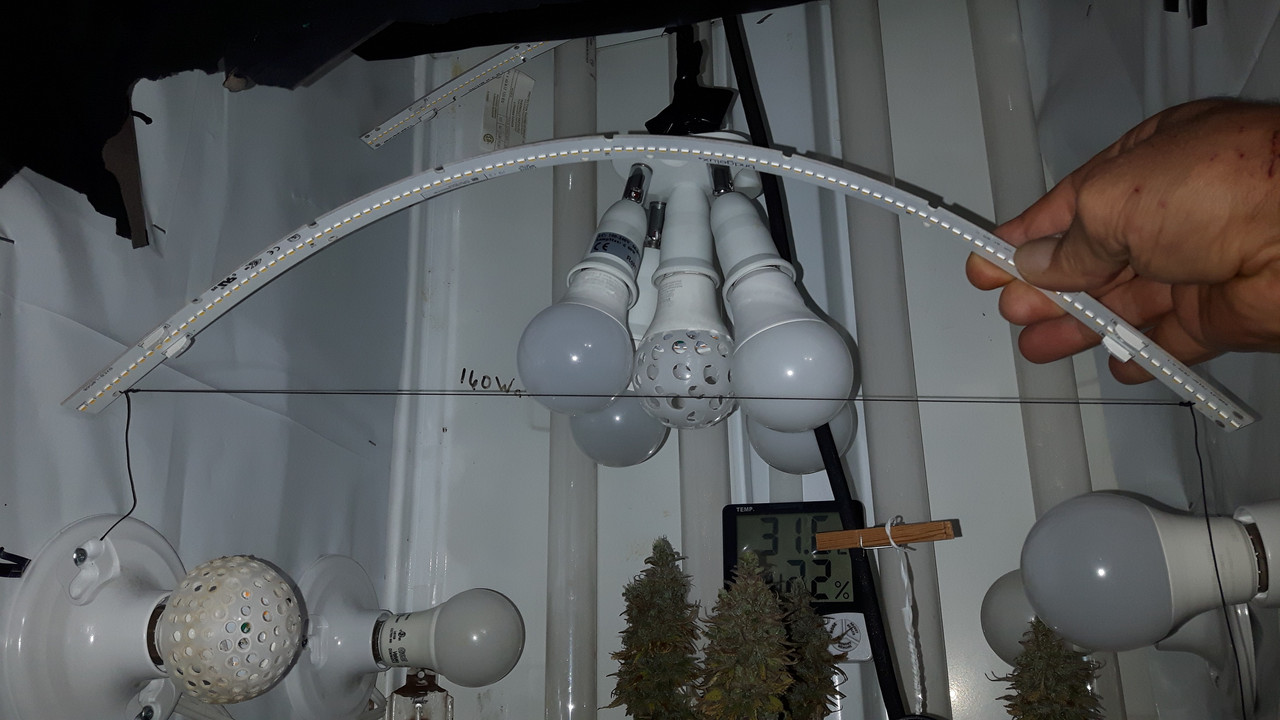
This way it clears the closet walls and I can maybe tie up all four strips together and make some sort of adjustable framework that moves up and down.
I don't really know for sure what I'm going to do but I do want to use the five SILs to start with because I'm used to them, I know where to set them and they work well.
I may leave the four 2' strips out of my next grow.

This way it clears the closet walls and I can maybe tie up all four strips together and make some sort of adjustable framework that moves up and down.
I don't really know for sure what I'm going to do but I do want to use the five SILs to start with because I'm used to them, I know where to set them and they work well.
I may leave the four 2' strips out of my next grow.
PCBuds
Well-known member
I was going to wait until all my parts arrived from China before I installed the lights and started a new plant but then I decided to do another experiment.
I thought I would just leave everything the way it is and use the SILs for one more grow while waiting on the mail.
I decided to germinate a seed and just stick it right in beside the plant that's almost done. I dug around the roots a bit with a pencil and cleaned it out and then filled it up with potting mix and stuck a sprouted seed in.
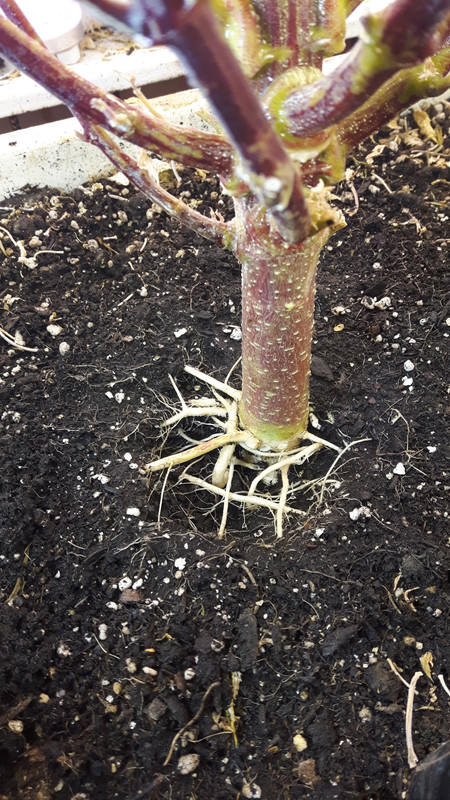
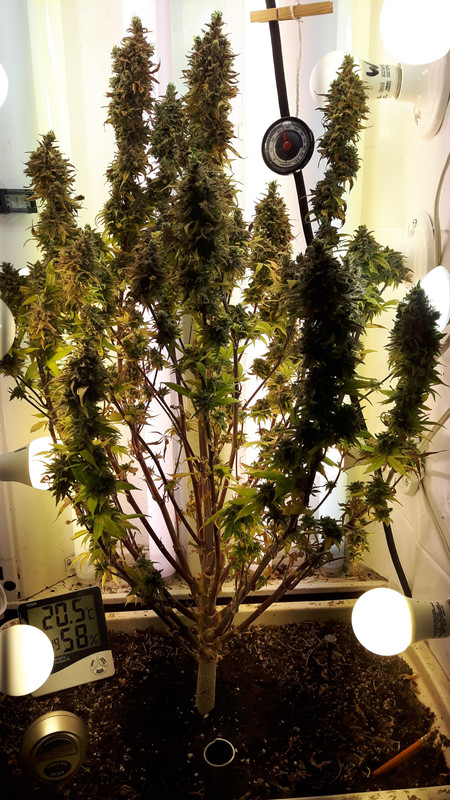
After a day and a half the seed pop through the surface.
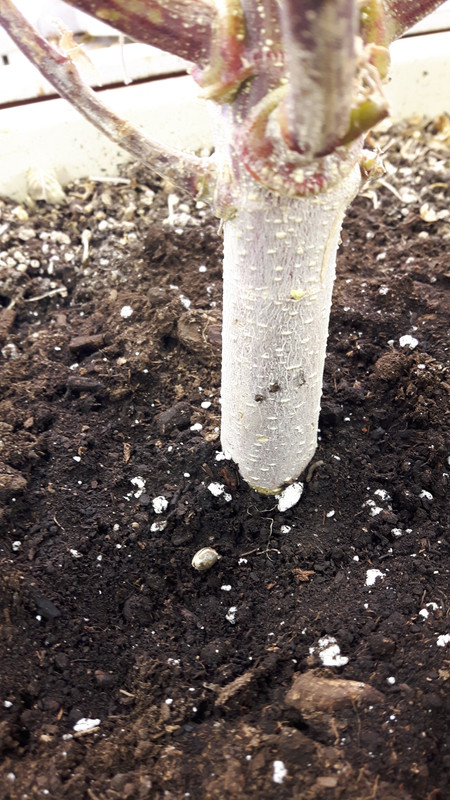
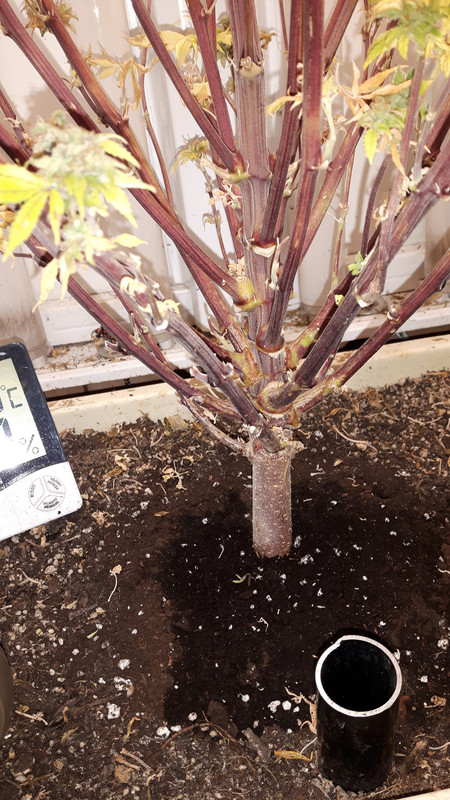
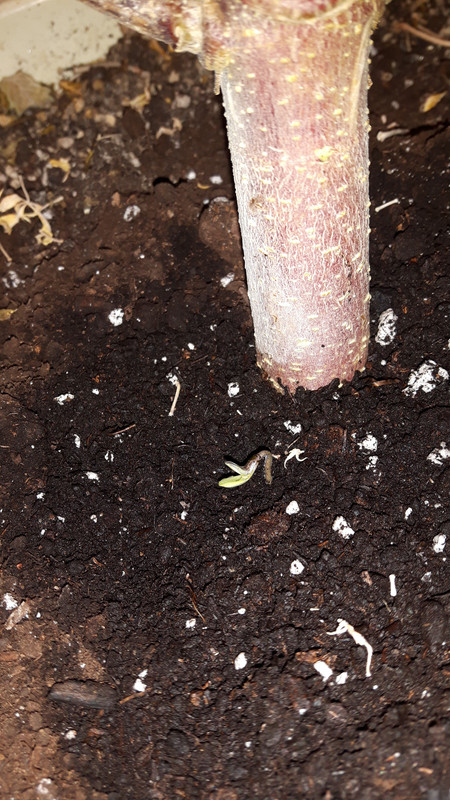
I thought I would just leave everything the way it is and use the SILs for one more grow while waiting on the mail.
I decided to germinate a seed and just stick it right in beside the plant that's almost done. I dug around the roots a bit with a pencil and cleaned it out and then filled it up with potting mix and stuck a sprouted seed in.


After a day and a half the seed pop through the surface.



PCBuds
Well-known member
PCBuds
Well-known member
Thanks. 
It turned out Okay considering all the mistakes I made as well as making stuff up and doing things the wrong way. Lol
It's a good thing I'm not trying to grow Orchids. I would have given up long ago. Lol
I've got my new seedling set up and my five 10 Watt SILs at ~29" from my seedling.
I want to try to get her to stretch so I don't want to lower my light unless she looks too spindly and wants to fall over.
I want to try to space out my nodes further this time by using the lights.
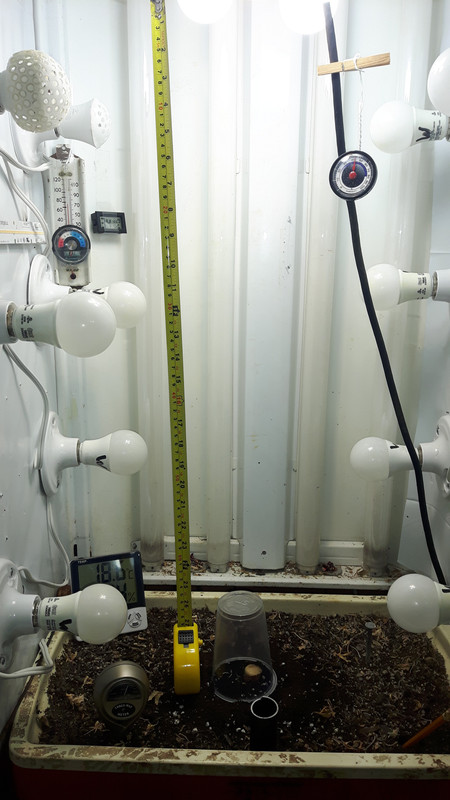
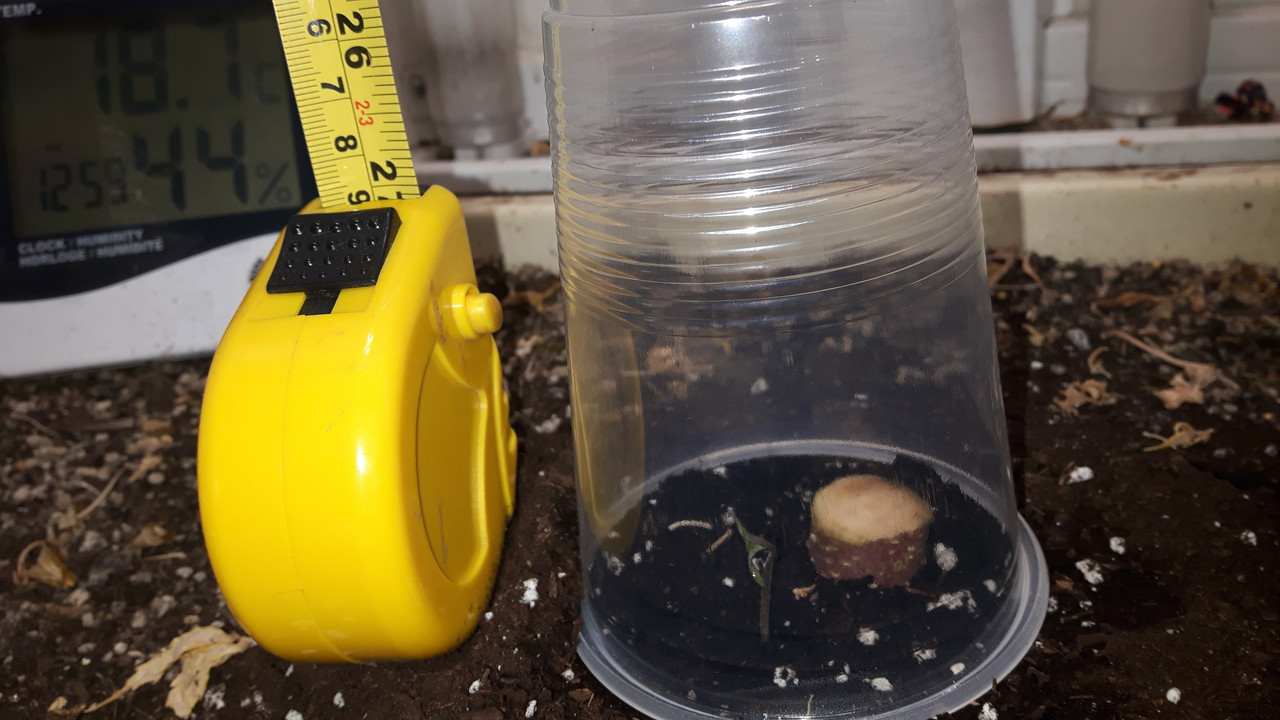
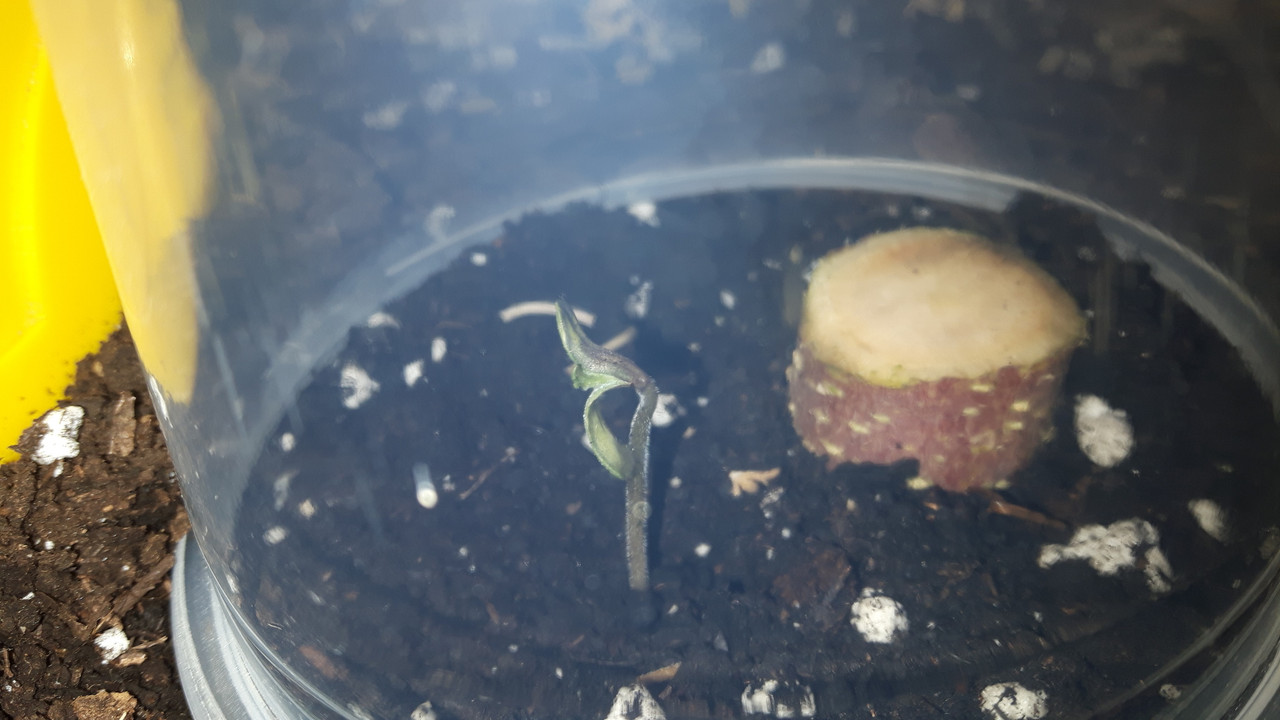

It turned out Okay considering all the mistakes I made as well as making stuff up and doing things the wrong way. Lol
It's a good thing I'm not trying to grow Orchids. I would have given up long ago. Lol
I've got my new seedling set up and my five 10 Watt SILs at ~29" from my seedling.
I want to try to get her to stretch so I don't want to lower my light unless she looks too spindly and wants to fall over.
I want to try to space out my nodes further this time by using the lights.



PCBuds
Well-known member
PCBuds
Well-known member
My plant dried out really quickly because the relative humidity is so low right now (around 30%), so I trimmed it up, weighed it and put it in a big jar.
I got 118.1 grams (4.16 OZ.)
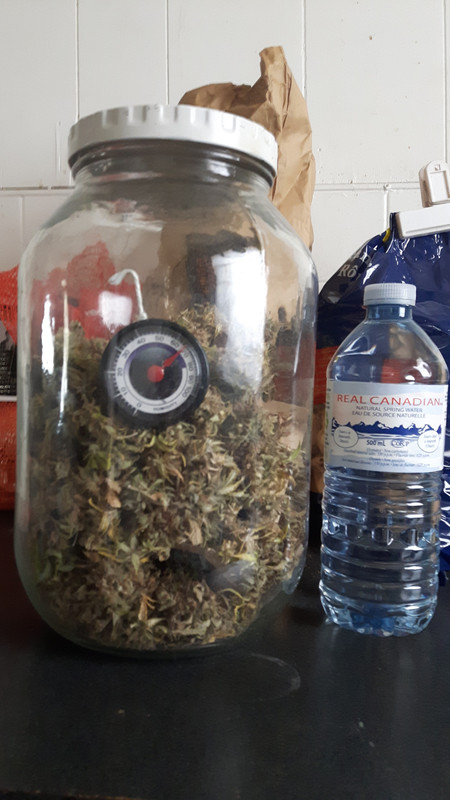
So, not too bad. My previous plant was 5.3 OZ.
I'm curious to see how much I end up with from my current plant.
I'm going 12/12 right from the start so it should be done in about 8-10 weeks.
I got 118.1 grams (4.16 OZ.)

So, not too bad. My previous plant was 5.3 OZ.
I'm curious to see how much I end up with from my current plant.
I'm going 12/12 right from the start so it should be done in about 8-10 weeks.
PCBuds
Well-known member
Been following your posts in the off-the-shelf LED comparison thread. Thought I would poke my head in here and say hi.
Hi!!

PCBuds
Well-known member
I was churning the buds around in the container when I noticed some round leaves and didn't know what the hell they were?
Upon closer inspection, I realized it was a seed!
What the hell ??
So I dug through all my buds and ended up with 160 seeds.
I don't know what happened? Maybe it Hermed and I didn't notice or somehow some pollen floated in my house from the neighbors growing or something?

I don't know if it's a good thing or a bad thing?
Apparently, the weed is crap if its got seeds but it looks pretty good and it's all sticky. (I haven't smoked any yet)
I'm used to spending $10-$14 a seed and now I've got a shit load of them.
I assume that they're going to be regular seeds? So I'm going to have to sex them?
That's going to really change my growing.
But that's OK, I've got a lot of seeds and a big ole pile of weed in the freezer, so I'm prepared for a multitude of new failures. Lol
The biggest problem for me is that I really wanted to try a new flavor.
I've been smoking White Widow for years now.
I guess I could still buy some new seeds.
I think I want to go with Auto Flower, it's just easier.
Can I mate an Auto Flower with a Photo Period White Widow and get Auto Flower seeds??
Upon closer inspection, I realized it was a seed!
What the hell ??
So I dug through all my buds and ended up with 160 seeds.
I don't know what happened? Maybe it Hermed and I didn't notice or somehow some pollen floated in my house from the neighbors growing or something?

I don't know if it's a good thing or a bad thing?
Apparently, the weed is crap if its got seeds but it looks pretty good and it's all sticky. (I haven't smoked any yet)
I'm used to spending $10-$14 a seed and now I've got a shit load of them.
I assume that they're going to be regular seeds? So I'm going to have to sex them?
That's going to really change my growing.
But that's OK, I've got a lot of seeds and a big ole pile of weed in the freezer, so I'm prepared for a multitude of new failures. Lol
The biggest problem for me is that I really wanted to try a new flavor.
I've been smoking White Widow for years now.
I guess I could still buy some new seeds.
I think I want to go with Auto Flower, it's just easier.
Can I mate an Auto Flower with a Photo Period White Widow and get Auto Flower seeds??

